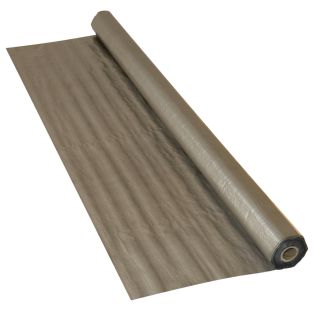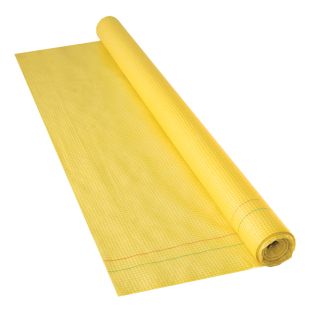Roof waterproofing and vapor barrier
A good roof should be waterproof and insulated. The insulation of the roof allows you to reduce heat loss not only of the attic room, but also of the whole house as a whole. Warming the roof, it is necessary to simultaneously protect it from the harmful effects of moisture, which can occur in the under-roof space. To do this, it is necessary to perform a vapor barrier of the roof using roofing films and waterproofing of the roof using polyethylene film.
- Steam barrierPerforated films have many micro-holes in the form of cones.
Their bases are located in the lower part of the film, thus facing the under-roof space. Moisture freely passes through them from the inside out, but is delayed from the outside of it. This increases the vapor permeability of the underlay film. Therefore, the use of polyethylene and polypropylene roofing films involves the installation of a ventilation gap between the insulation and waterproofing. Therefore, it is necessary to arrange a control crate, which, in this case, is a necessary element of the roofing pie.
Diffusion membranes can be laid directly on the thermal insulation. Thus, it is possible to reduce the time, costs and the amount of roofing space that is allocated for insulation. Such waterproofing films have high strength. When using them, it is very important not to confuse where the top is and where the bottom is. After all, this material is one-sided, otherwise you can get the opposite effect.
Vapor barrier films are mounted from inside the room. The vapor barrier layer must be airtight. To do this, the edges of the film must be glued using special adhesive tapes.
When using films with a reflective surface, they should be attached from the inside of the roof space directly to the thermal insulation. In order for the steam barrier to function normally, a ventilated gap is also arranged between it and the inner lining. An internal crate is arranged to the rafters from inside the roof space, to which the finishing material is attached.
Such films allow more steam to pass through, in comparison with standard waterproofing. They do not allow moisture to penetrate into the under-roof space and do not let water vapor out of it.
Membranes can consist of one, two, three and four layers. Membranes with one or two layers are more often used for wind protection, and with three or four — for waterproofing. When constructing a roofing pie, three-layer membranes are used, each layer of such membranes performs its function. So, the first layer is responsible for durability, the second is resistant to UV radiation, and the third retains moisture. Thus, a comprehensive protection of the roof and attic is created.
Superdiffusion membranes are laid directly on the thermal insulation layer without an additional gap. This saves the under-roof space and allows the use of insulation of much greater thickness. With a cross-section of the rafters of 150 mm, insulation can be laid between them for their entire height, and this minimally meets the requirements for heat transfer resistance installed for roofs.
Especially superdiffusion membranes are indispensable when rebuilding a non-residential attic into a living room. After all, their use allows you to do without replacing the old rafter structure with a new one. During operation, condensation may form on the surface of the polypropylene waterproofing, which is facing the insulation. To prevent this from happening, the inner side of the waterproofing film is covered with a layer of viscose fiber and cellulose. This layer absorbs and retains moisture and forms droplets even with its excessive amount.
Underlay films. How to choose?Roofing films are necessary elements of the roofing structure, despite the fact that they account for only about 2% of the total cost of roofing.
When buying films, you should not save money and choose cheaper, you need to approach this issue competently and pay attention to the following indicators:
- In
the EU, 1 sq.m. of film. A strong and dense film cloth will always have more weight. Therefore, the heavier the material, the more reliable it is.
- Vapor permeability. It is measured in g / sq. m / day, which shows how much gaseous moisture 1 sq.m of material passes over a certain time. Films with low vapor permeability have 25-60 g / sq.m / day, and for films with high — 1000 g / sq.m / day.
- Wind protection. It is measured in ml/s, which indicates the volume of air that passes through a unit of the surface of the material at standard pressure. This property does not allow warm air to escape from the insulation.
- Water resistance. The pressure on the film is measured for consumers in millimeters of water column. Films with low water permeability, for example 0.1-0.3 mm of water, must be immediately covered with roofing.
- Durability. The service life of the underlay films should exceed 50 years.
So, in order to reliably protect the house from various destructive properties of the environment and the long service life of its structure, you will need high-quality materials and the advice of experienced specialists. Both You can find it here!



